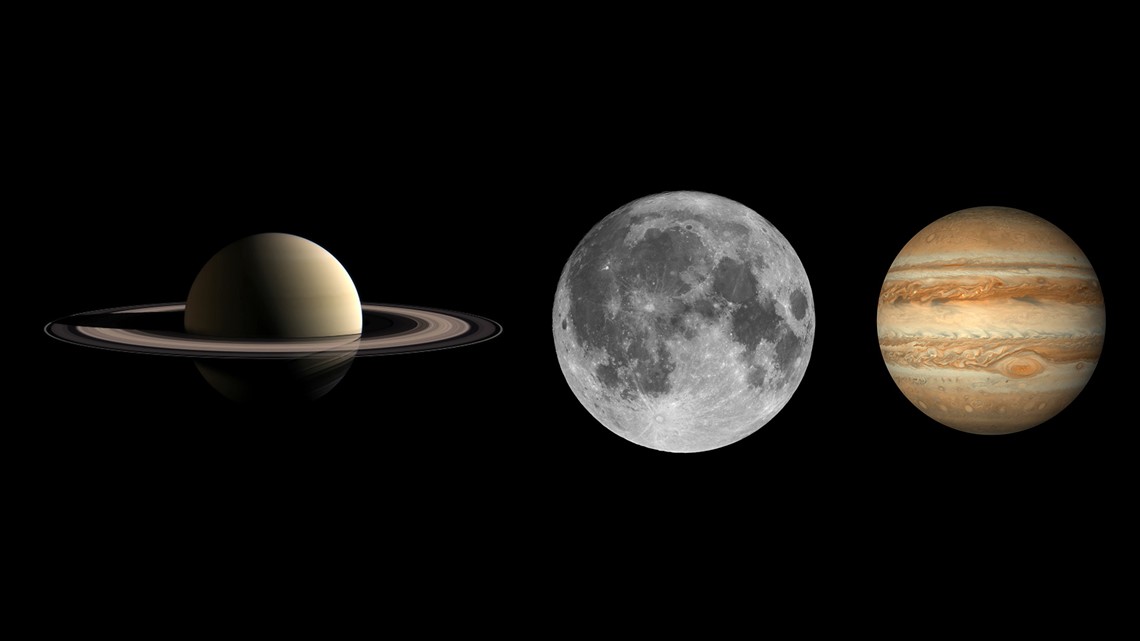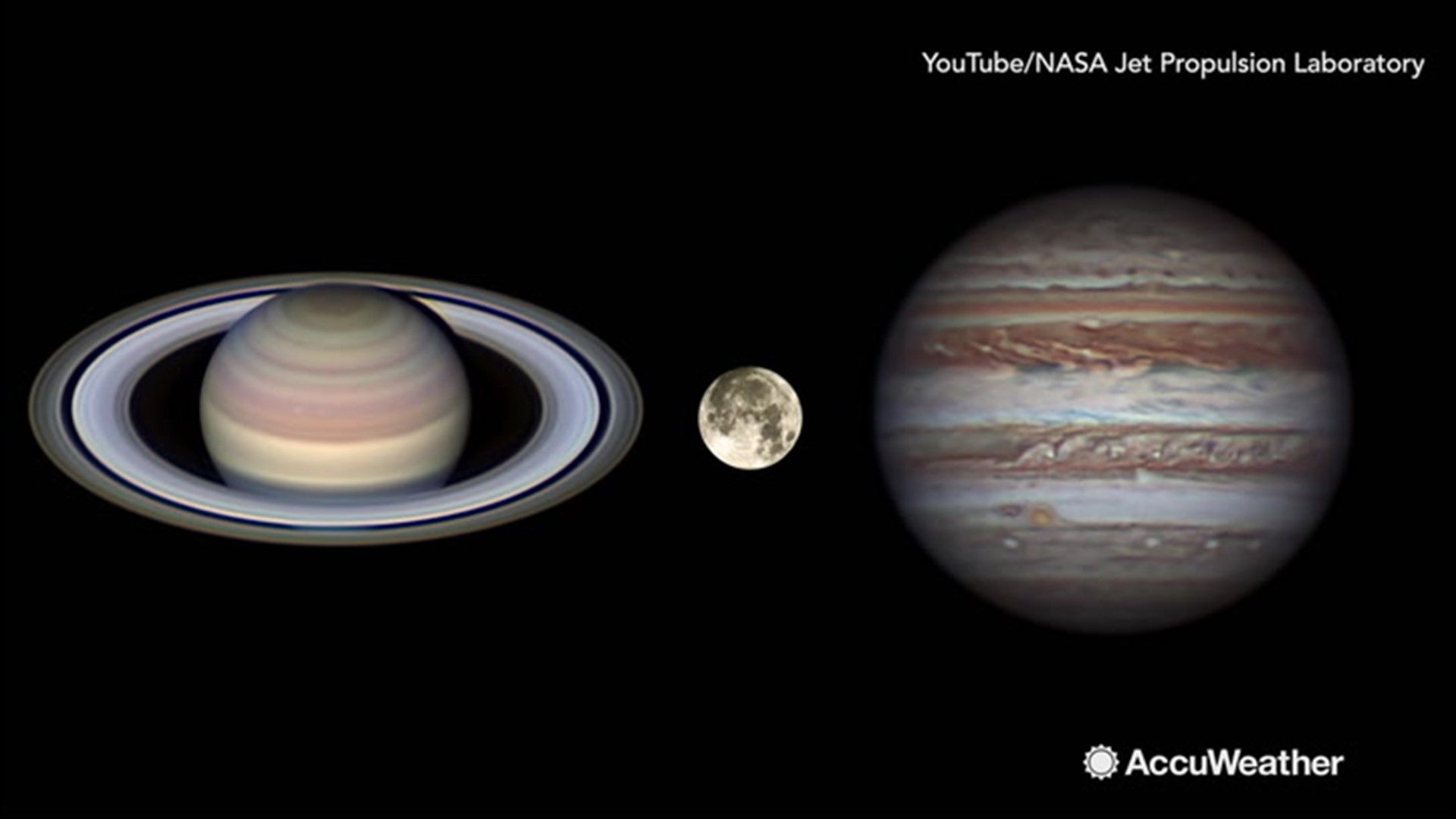You will have three nights starting this Friday to see Jupiter, Saturn and the moon lined up side-by-side in the night sky.
With Venus currently on the other side of the sun, Jupiter will be the brightest planet in the sky in August, according to EarthSky.org.
If you look south between Friday and Sunday, you'll be able to see the waxing gibbous moon on a nearly straight line between Jupiter and Saturn.
On the 9th, the moon will appear just above and to the left of Jupiter while Saturn is farther to the left. The next night, the moon will have moved to the left and be nearly equidistant between the two planets. On the 11th, the moon will be just to the right of Saturn.
Facts about Jupiter
- Jupiter's diameter 11 times bigger than Earth -- meaning you'd have to put 11 Earths side-by-side to match Jupiter's diameter.
- Its surface gravity is nearly three times that of Earth.
- To escape Jupiter's gravity, you'd have to travel 134,664 mph. Earth's escape velocity is 25,031 mph.
- Jupiter's Great Red Spot is a giant storm that is larger than Earth and has been going on for hundreds of years.
- One Jupiter year takes nearly 12 years on Earth.
- Jupiter has 75 moons.
Facts about Saturn
- Saturn's diameter 9.1 times bigger than Earth's.
- It's surface gravity is only slightly more than Earth's (34.3 feet per second squared compared to 32.041 feet per second squared).
- Like Jupiter, it's mainly a giant ball of gas made up of hydrogen and helium.
- One Saturn day lasts 10.7 Earth hours. Its year lasts 29 Earth years.
- Saturn has 53 moons.
- NASA researchers believe Saturn's signature rings may disappear in the next 100 million years.



